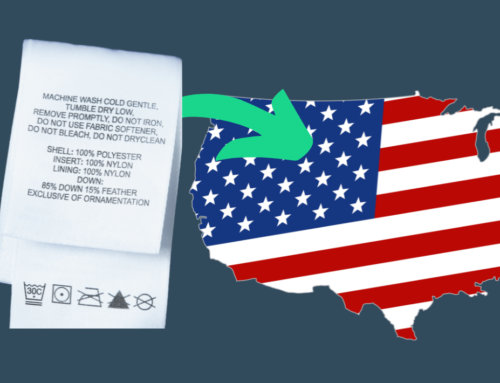Importing a Car from Germany to the United States

Breeze Customs Blog
For many, German cars are the pinnacle of automotive safety and design, with many models considered the best high-performance vehicles ever made. So, if you are in the market for a new car, consider importing a car from Germany because of the excellent craftsmanship and reputation of German engineering!
In this article, we’ll explain why importing a car from Germany might be the best decision you ever make.
The benefits of importing a German car
If you’re looking for a high-end vehicle, chances are good that you’ll find what you’re looking for in Germany. There are several reasons why people import cars from Germany. First and foremost, German cars are known for their quality and luxury. Moreover, German cars tend to hold their value well, so you can be confident that your investment will pay off in the long run. Finally, with so many makes and models to choose from, you’re sure to find the perfect car for your needs. This is especially true for luxury and performance vehicles.
German cars often come with features that are not available in American cars. For example, many German cars have more advanced safety features that are not common in North America. You might even find that German cars are manufactured to meet or exceed the safety and emissions standards in the United States.
Can I import a car from Germany to the U.S.?
Before you begin your import journey, you must determine first if the car you want is eligible for import from Germany to the U.S. As with all other foreign car imports, eligibility is based on whether your car conforms to the rules and regulations of the Department of Transportation (DOT) and the emissions standards and regulations of the U.S. Environmental Protection Agency (EPA).
When importing a car from Germany, you must understand the import regulations and requirements. The U.S. Department of Transportation (DOT) and the Environmental Protection Agency (EPA) have strict regulations for imported vehicles. These rules ensure that all vehicles meet high safety and environmental standards and protect consumers from fraud. A customs broker can help you understand these import regulations and streamline your import process.
In most cases, the German car you want to import may be a nonconforming vehicle. The National Highway Traffic Safety Administration (NHTSA) defines a nonconforming vehicle as “a vehicle that does not meet safety standards set by the Federal Motor Vehicle Safety Standards (FMVSS) (as per the Motor Vehicle Safety Act), or that has been altered from its original design.” It also refers to a vehicle not built to EPA standards.
Because German cars are not usually manufactured according to U.S. standards, you can import your nonconforming vehicle into the United States either by certification or by exemption:
1. By Certification
A nonconforming car can be imported if modified, tested, and certified by Registered Importer (RI) or an Independent Commercial Importer (ICI).
2. By Exemption
The EPA and CBSA allow you to import a nonconforming vehicle temporarily – with EPA’s pre-approval – if it is imported for the following purposes:
- Testing
- Display
- Repair or alteration
- Non-residents
- Competition/Racing
If it qualifies for EPA exemption, the car should be imported under a U.S. Customs and Border Protection (CBP) bond.
What if my German car is a classic or antique?
If the car you wish to import from Germany is older than 25 years, it may as well be exempt from meeting EPA and DOT requirements. Commonly known as the 25-year rule, the Imported Vehicle Safety Compliance Act of 1988 (IVSCA) exempts nonconforming foreign motor vehicles that are 25 years old or older (classic or antique) from the restrictions imposed by this Act. Moreover, If the car is at least 21 years old, there are no EPA compliance requirements upon importation.
That means that if you are importing an older car model, you will not have to go through inspections or compliance procedures. While this may sound like good news, it doesn’t mean that you can simply ignore the EPA and DOT requirements entirely. There are still other hoops you need to jump through before your car is allowed on American roads.
How much does it cost to import a car from Germany?
There are several costs to consider when importing a car from Germany into the U.S. These include:
- Import Duties: Importing a car from Germany to the United States means paying duties and fees. The amount of duty depends on the type of vehicle, its value, and its age. The import duty for German-made cars is 2.5%
- Customs Bond: A customs entry bond is required for every imported vehicle. You can choose to obtain a Single-Entry Bond (for one-time imports) or a Continuous Bond (for multiple imports within 12 months).
- DOT Bond (for nonconforming vehicles): Cars without a DOT certification label must be imported as nonconforming. In this case, you must register with a DOT-Registered Importer (RI) and post a DOT bond (the value of the bond should be 1.5 times the car’s dutiable value).
- Gas-Guzzler Tax: Some imported cars are subject to the Gas-Guzzler Tax. The amount of the tax is based on a combined fuel-economy rating assigned by the EPA. The higher the fuel economy, the lower the tax, and no tax is imposed on cars with a combined fuel-economy rating of at least 22.5 miles per gallon.
- Insurance: Once you import your car from Germany, you will want to purchase an insurance policy. That is because to drive in most states legally, you need to meet the minimum vehicle insurance requirements set by the state. When shipping your car from Germany, it’s also a good idea to have an insurance policy covering the shipping.
- Brokerage fees: If you work with a customs broker, you will need to pay a small fee for their services. Most people who import cars from Germany prefer to work with a customs broker to guide them and help streamline the importation process.
- Shipping fees: German cars are usually imported by ocean freight. Shipping fees depend on the size of your car and the carrier you choose. If you have an auto broker or shipping company handle the shipping process for you, request an estimate on shipping costs before you commit to working with them. Otherwise, a customs broker can help you find the best shipping partner to import your car from Germany.
- Licensing and registration: When your car arrives in the U.S., you will have to pay fees for its licensing and registration. The fees vary, depending on where you wish to register your car.
Are there trade agreements between the U.S. and Germany?
No, there are currently no trade agreements between the United States and Germany, and the U.S. does not exempt any products from tariffs when imported from Germany. This applies to cars as well.
What are the steps to import a car from Germany to the U.S.?
If you’ve decided that importing your car from Germany is right for you, there are several steps you need to take to ensure that everything goes smoothly.
1. Determine your car’s eligibility
To import a car from Germany, you will first need to determine whether or not it qualifies for importation under U.S. regulations (both federal and state). For a vehicle to be able to enter the country, it must meet all of the safety standards set by NHTSA.
The Environmental Protection Agency (EPA) also determines whether an imported car meets an acceptable level of emissions control for use on U.S. roads (known as “conformity” requirements).
2. Hire a customs broker
Most car importers prefer to hire a customs broker to help with the import process. A customs broker is a CBP-certified individual or company that specializes in importing cars and other goods from foreign countries into the United States.
We recommend working with a customs broker because they know all the import rules and regulations, have experience dealing with importing vehicles and can help you navigate any potential pitfalls.
Once you find a broker that meets your criteria, it’s crucial to read reviews about them and ask them questions before committing to work with them.
3. Ship your car from Germany to the U.S.
Next, you will need to find a shipping company that can handle the transportation of your car from Germany to the U.S. If you do not have an established relationship with a German auto shipper, consider using an agent or customs broker who has experience in the field.
You will also need to choose a port of entry. There are more than 300 land, air, and sea ports in the United States. Choosing a port of entry that handles vehicles and is closest to your destination state is best. This interactive port of entry map provides detailed information about each port and its requirements. We recommend speaking to a customs broker to simplify the process and help you choose the most suitable port of entry.
4. Prepare your paperwork
Now that you’ve determined your shipping method and port of entry, you’ll need to prepare your import documentation. The documents required to import a car from Germany to the United States are:
- A U.S. Customs Proforma Invoice
- The carrier’s Bill of Lading (BoL)
- A Bill of Sale showing VIN
- Foreign Registration
- An EPA form 3520-1
- A DOT form HS-7
- Your Importer Security Filing (ISF)
- A Letter of Recall and Conformity from the manufacturer (if applicable)
You can either submit these documents to CBP yourself or have your customs broker file them on your behalf.
5. Pay the required duties and fees
Imported cars in the United States are subject to customs duty. The amount of duty you will need to pay depends on the value of your car. All foreign and German vehicles are dutiable at the following rates:
- 2.5% for cars
- 25% for trucks
- Either free or 2.4% for motorcycles
6. Get insurance for your vehicle
You will need to purchase insurance for your imported car. The cost varies based on the age and make of your car, where you live, how safe you drive and what kind of discounts you qualify for. It will cost more to insure a German car than an American one. Insurance companies usually consider the following factors when calculating premiums:
- The make and model of your car. Some cars are more expensive to insure than others. For example, a small car costs less than a large SUV.
- Your driving records. Expect to pay more for insurance if you’ve had multiple accidents or speeding tickets.
- Where you live. Some states have higher rates than others due to traffic congestion, the cost of living in the area, and other factors.
You’ll also need insurance on your vehicle while it’s being shipped from Germany to the U.S. Your customs broker can help arrange this in advance as well.
7. Register your car in the U.S.
Once you’ve submitted your import documentation and passed an inspection, you’re ready to register your vehicle with your state’s DMV and acquire license plates and permits.
For registration purposes, your responsibility as an importer is to establish that the imported vehicle conforms to import rules and regulations. You can do so by contacting the vehicle’s manufacturer and asking for a certificate of compliance with U.S. standards. Most manufacturers are already aware of the regulations and will issue a certificate of conformity when requested. You will need to have the Vehicle Identification Number (VIN) on hand when speaking to the manufacturer since vehicles and their attributes are tracked with this number.
When U.S. Customs verifies that your vehicle conforms with EPA and DOT requirements, an informal entry (Customs Form 368) must be completed and submitted to your state’s Department of Motor Vehicles (DMV) for registration. The process of acquiring plates and permits may be different from state to state, but in general, you will need to:
- Apply for a permanent vehicle registration
- Provide proof of insurance for your vehicle
- Pay any applicable taxes and fees associated with registering a new vehicle (these vary by state)
- Obtain license plates, which may be purchased from your local DMV location
- Obtain any necessary permits, such as a license plate sticker or emissions test certificate
Conclusion
Importing a German car is a big decision but comes with many rewards. Not only will you be getting a high-quality vehicle but one with luxury features and excellent resale value. Just remember that some requirements and costs are associated with importing a car from Germany, so be sure to do your research before making your purchase. Finally, if all else fails, consider buying an already imported German car, which is easier and less expensive. Whatever route you decide to take, we hope this article has helped clarify what it takes to import a car from Germany into the United States!
How Breeze Customs can help you import a car from Germany
At Breeze Customs, we help hundreds of importers bring their vehicles into the United States every year without hassle. Starting with the process of checking your vehicle’s admissibility and ending with customs clearance, we’ll take all the work off your shoulders. Book a meeting with one of our Breeze Customs Concierges and we’ll take it from there.




